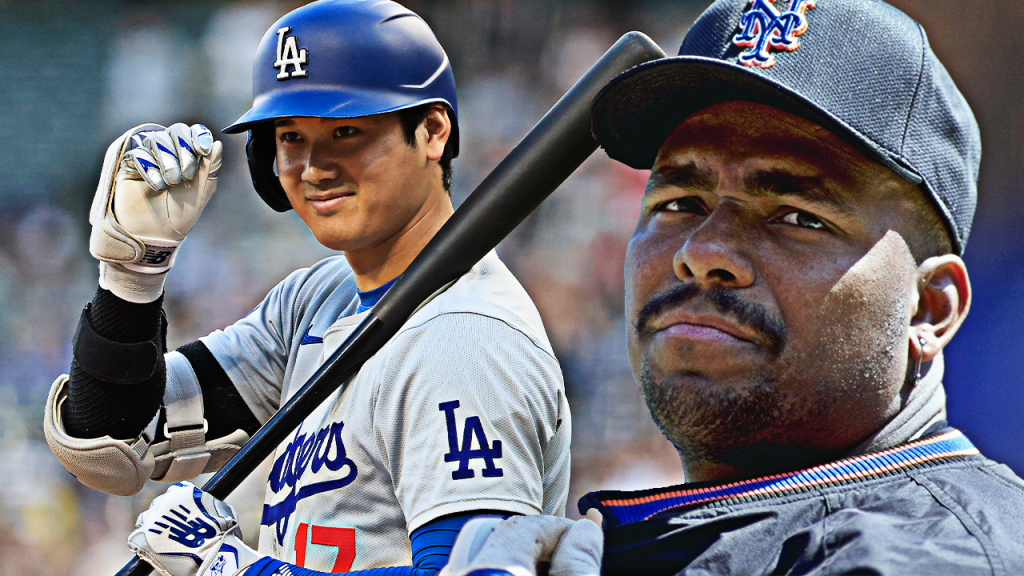Shohei Ohtani and his CAA agents shocked the sports world in December with news of his free-agent contract with the Los Angeles Dodgers. The $700 million headline number smashed the previous MLB record contract—$426.5 million for Mike Trout—and then there was the second stunner: All but $20 million of the deal was deferred.
Move over Bobby Bonilla—there is a new leader in the clubhouse for the most famous salary deferral in baseball history.
Bonilla, a six-time All-Star, was the highest-paid player in baseball at one point, but 23 years after he retired, the slugger might be best known for a contract deferral at the end of his career.
During his second stint with the New York Mets and a lousy 1999 season, the club released Bonilla but still owed him $5.9 million for 2000. Bonilla and his agent, Dennis Gilbert, offered to defer the payment for a decade and stretch it out over 25 years at an 8% interest rate. Mets owner Fred Wilpon accepted the deal, thinking his double-digit investment returns with Ponzi schemer Bernie Madoff would continue. The high interest rate meant a $1.19 million payout every July 1 from 2011 through 2035, when he will be 72 years old, totaling a payout of $29.8 million.
“I always talked to players about deferring some of their money,” Gilbert said in a video interview. “It’s taking money out of the bank of today and putting into the bank of tomorrow.”
Gilbert built a life insurance and financial advisory business before he co-founded the Beverly Hills Sports Council agency with Rick Thurman to represent MLB players for their contracts. They represented stars George Brett, Jose Canseco, Barry Bonds, Mike Piazza, Curt Schilling, Rickey Henderson and Trevor Hoffman. Gilbert sold his stake in BHSC in 1999 but continued to work with players on insurance and estate planning. He now also serves as commissioner of Perfect Game, which hosts youth baseball and softball tournaments and showcase events.
Bonilla was not the first MLB star to have deferrals in his contract. In 1984, reliever Bruce Sutter signed a six-year, $9.1 million contract with the Atlanta Braves that would ultimately pay out $47 million, thanks to a 12.3% interest rate. Before Bonilla, the Mets did a deferred deal with pitcher Bret Saberhagen that paid $250,000 annually for 25 years. In 2000. Ken Griffey Jr. had half of his $112.5 million contract extension with the Cincinnati Reds deferred at 4% interest. It meant $5 million a year starting in 2009 with the final payment due this year, according to his longtime agent Brian Goldberg; only four players on the Reds’ 2024 roster will make more. Chris Davis retired in 2021, and his deferrals, which don’t include interest, kicked off last year and will total $59 million through 2037.
Deferrals have become commonplace in many nine-figure MLB deals over the past decade. In 2015, Max Scherzer delayed payment on half of his $210 million deal with the Washington Nationals. Jacob deGrom ($52.5 million), Chris Sale ($50 million) and Nolan Arenado ($50 million) all had deferrals in recent deals.
The Dodgers have been the most aggressive with deferrals. Mookie Betts had $115 million of his $365 million Dodgers’ pact deferred. In 2022, Freddie Freeman signed for $162 million, including $57 million deferred. In March, Will Smith signed a $140 million extension with $50 million deferred. Ohtani will receive $68 million a year from the Dodgers starting in 2034.
The big difference between these deals and Bonilla’s is interest payments on the deferral. It is rare for recent deferrals to include any interest, with Stephen Strasburg’s Nationals contract an exception with a 1% interest rate on the deferred salary. The deferral without interest means a reduced luxury tax payroll for teams, and while owners need to fund these future payments, they can do so on a discounted basis under the premise that the payments will grow in investment accounts.
For athletes, deferrals have potential tax benefits if the income is paid out after their careers when they can live in a state with a lower tax rate or no state income taxes at all. The Ohtani case brought attention to this loophole with California, home to the county’s highest marginal state tax rate of 14.4% for those earning more than $1 million. State legislators want Congress to close this loophole.
Bonilla and Griffey both live in Florida, which does not have a state income tax.
The Mets are not the only MLB team still cutting Bonilla a check. He also still receives a deferred salary from his tenure with the Baltimore Orioles worth $500,000 each year between 2004 and 2028.
Gilbert credits longtime sports business journalist Darren Rovell for calling attention to Bonilla’s annual payout and coining July 1 as Bobby Bonilla Day. Steve Cohen, who bought the Mets from the Wilpons in 2020, has said multiple times that he wants to celebrate the day at Citi Field at some point with an oversized check for Bonilla. The Mets have no plans for the day this year, according to a spokesperson.
Gilbert is still in the insurance business and works with athletes to preserve their wealth. “Athletes develop a lifestyle, and expenses generally stay the same, but income does not go up, it goes down,” Gilbert said. “It’s not what you make, but what you keep. That’s it.”





